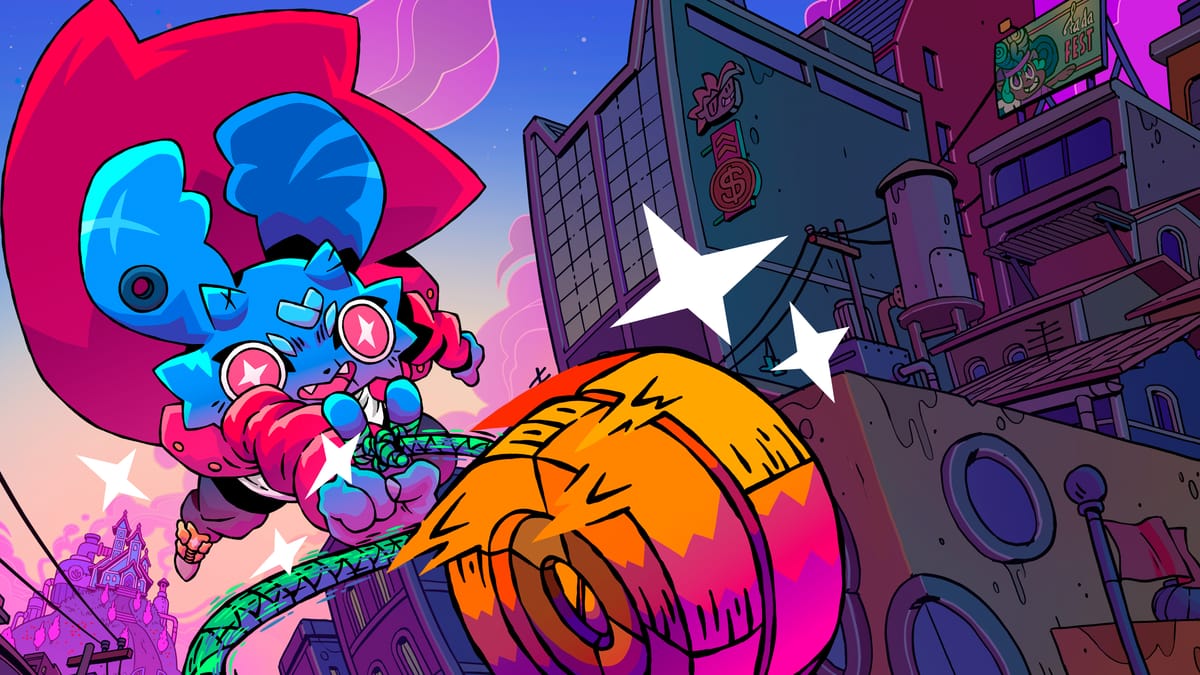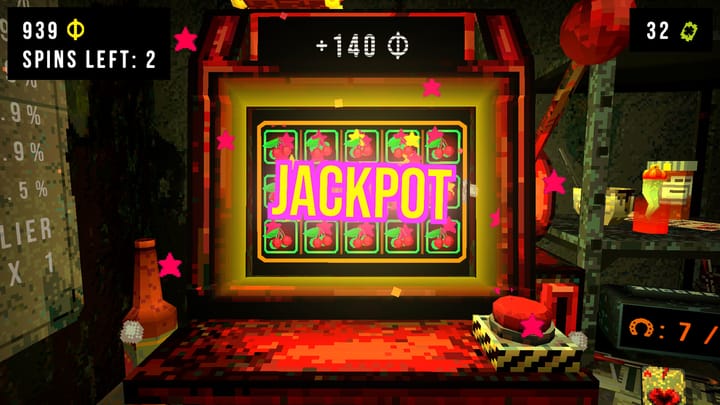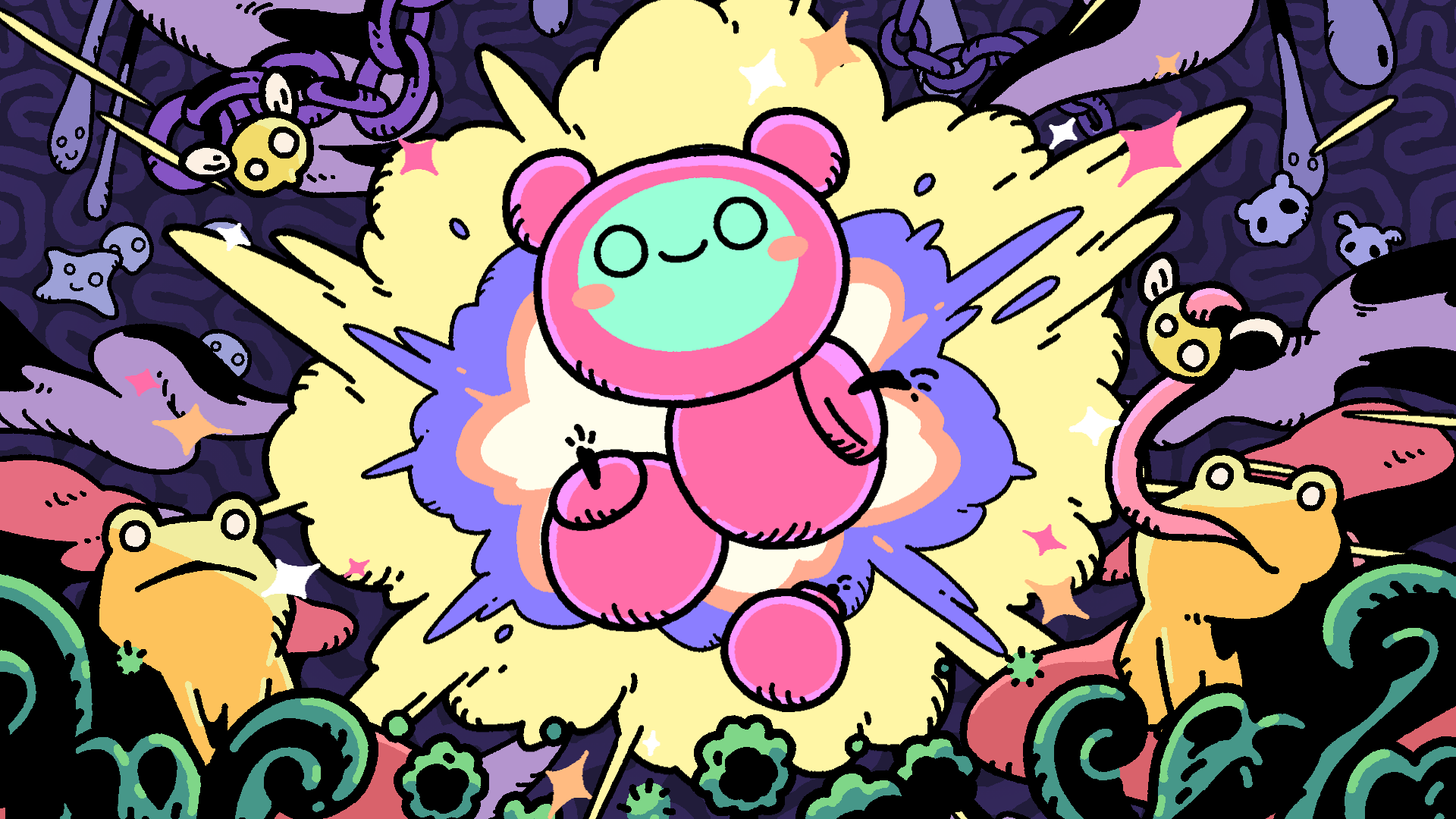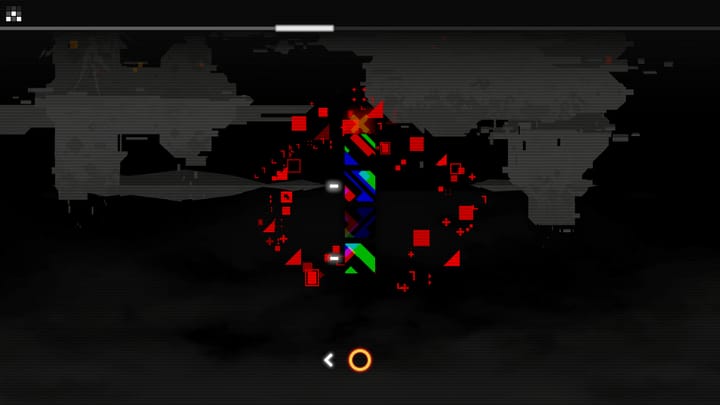Player-curated challenge and a novel, versatile twist to combat helps Pocket Trap's yo-yo themed adventure land firmly in the realm of entertaining, let alone evocatively nostalgic.
Developer Pocket Trap clearly have a fondness for the Game Boy Advance and its associative period of handheld gaming. You needn't settle on the more-than-blatant nod to the very boot-up animation to Nintendo former purple handheld. Nor would remarking on the option to go all the way in being able to emulate such a resolution and pixel density in the game's options, be some conclusive end to the discussion.
Spend just a few moments in the top-down, vibrant setting that is Pipistrello and the Cursed Yo-Yo and you'll quickly come across the more subtler design criteria that helps separate the regular 16-bit inspiration from that of the 32-bit, early-2000's sort. From its choice of font during spots of dialogue, to even the way certain character profiles feel unapologetically blocky. As if to denote even back then, the constraints of squeezing a "16-bit style" game into handheld form was already proving a challenge.

The Game Boy Advance, as much its library of games, did at the time feel like the original era of "throwback" design ethos. Whether that was original titles or simply ports of classic fifth-generation releases that had come before, even as far back as the early-2000's, the feeling was that nostalgia for what was, needn't obstruct the desire to discover what could be.
One's love and/or admiration for those days – for what a portable little machine as the GBA could muster – needn't be the end goal, but better still, a springboard for something else entirely. And in the case of Pipistrello and the Cursed Yo-Yo, Pocket Trap have fortunately recognized that possibility. Constructing a top-down action-adventure – fittingly in many ways to the Zelda games of that era – whose novel deviation on combat, more than validates its placement as this game's key pillar.
Who knew you could come up with so many ideas for combat scenarios and puzzle-solving alike, involving the use of one's yo-yo. Had it stopped here however, those early periods of similarly-nostalgic satisfaction may have waned. After all, Pipistello and the Cursed Yo-Yo is not a complex game by any means. Even if sometimes a necessity to somehow come across that way, can lead to an occasional spot of frustrating design. Getting hit by one too many vehicles while exploring the city streets, loses much of its own novelty relatively quickly.
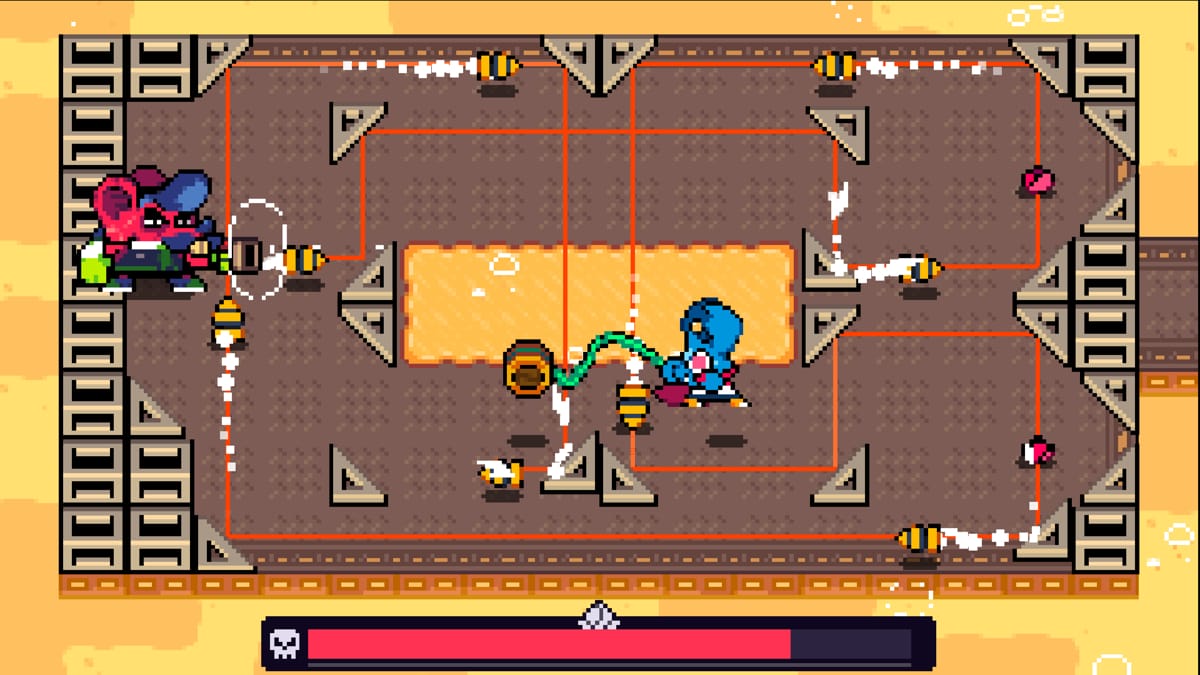
The game's major puzzles confined to an ease of understanding, its siphoned progression of exploration, mini-dungeon, dungeon, rinse-and-repeat not all that different or indeed original when compared to the games inspiring it. At a glance, Pipistrello and the Cursed Yo-Yo isn't exactly doing much new when it comes to structure.
It's because Pocket Trap approach this and perhaps acknowledge what's come before – specifically the fact they're not the first to hearken to the days of portable 16-bit experiences – where Pipistrello earns its high marks. Puzzles instead centred around positioning and precise timing, proving a better fit. A direction that leads to some wonderfully-deceptive scenarios that have you dodging enemy projectiles. To then still get hit, due to the pinball-like manner particular rooms/arenas are shaped like. Sloped corners and conveniently-triangular shaped objects serving as both a boon and a hindrance to one's success.
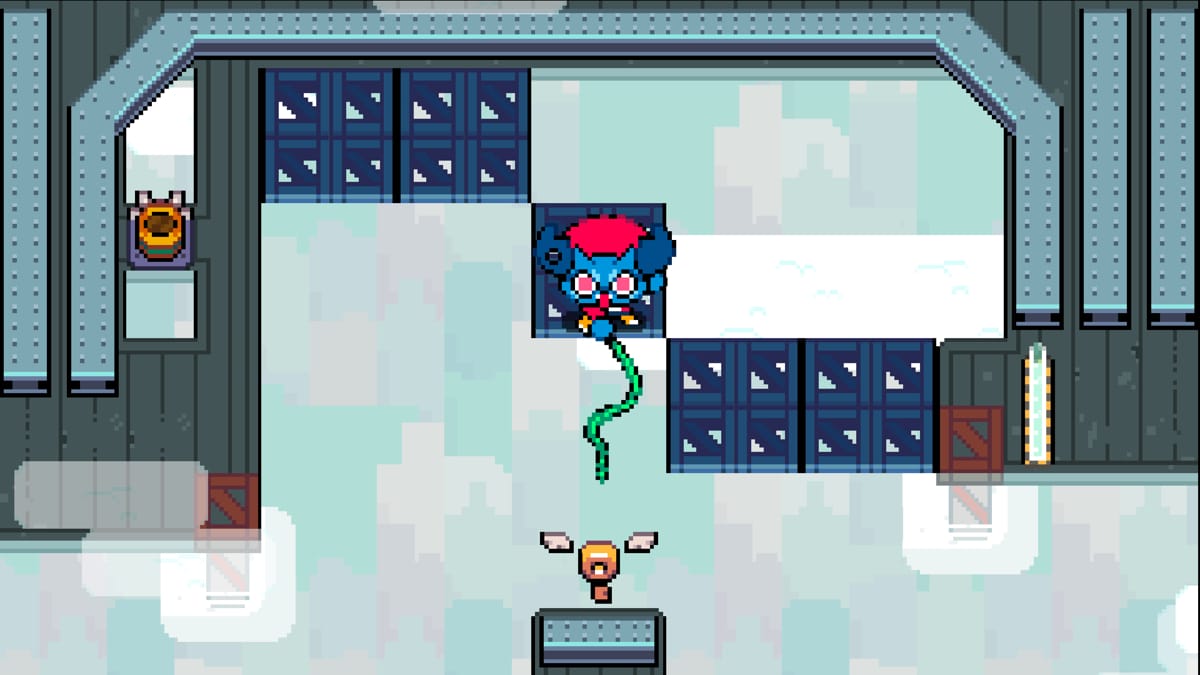
What this inevitably does for combat in Pipistrello and the Cursed Yo-Yo, is turn it into something that is equal parts exploitable and dangerous to one's own health pool. Even as one's arsenal of abilities increases – to the point where you're required to choose one over the other to assign to a particular input – the restraint on how aggressive you can be is kept relatively the same. Upgrading one's self doesn't mean you simply become invincible, it simply means you have more at your disposal to deal with what the game throws at you.
And admittedly, it's quite surprising just how messy and prone to mistakes one can be when you're not exploiting the opportunities that your equipped abilities can bring. Simply spamming moves in the hopes it does just as serviceable a job will pass, for a time, but eventually such strategies won't last. Take, for example, the temptation to let loose your yo-yo projectile-style, by launching it off your string for a stronger attack. But knowing you have to wait (what feels like) an eternity for it to return – should you decide against grabbing it yourself.
Sure the game relies on that safe go-to format of having you clear a set number of waves of enemies so as to clear the way. But even in this safety of what's come before, Pipistrello provides enough potential exploiting of a situation, that such repetition doesn't necessarily feel like a bad thing. The comical realization that you can "defeat" an enemy by simply having them fall into water, is there to be taken advantage of, in all the ways the similarly curved edges to bounce one's yo-yo off are.
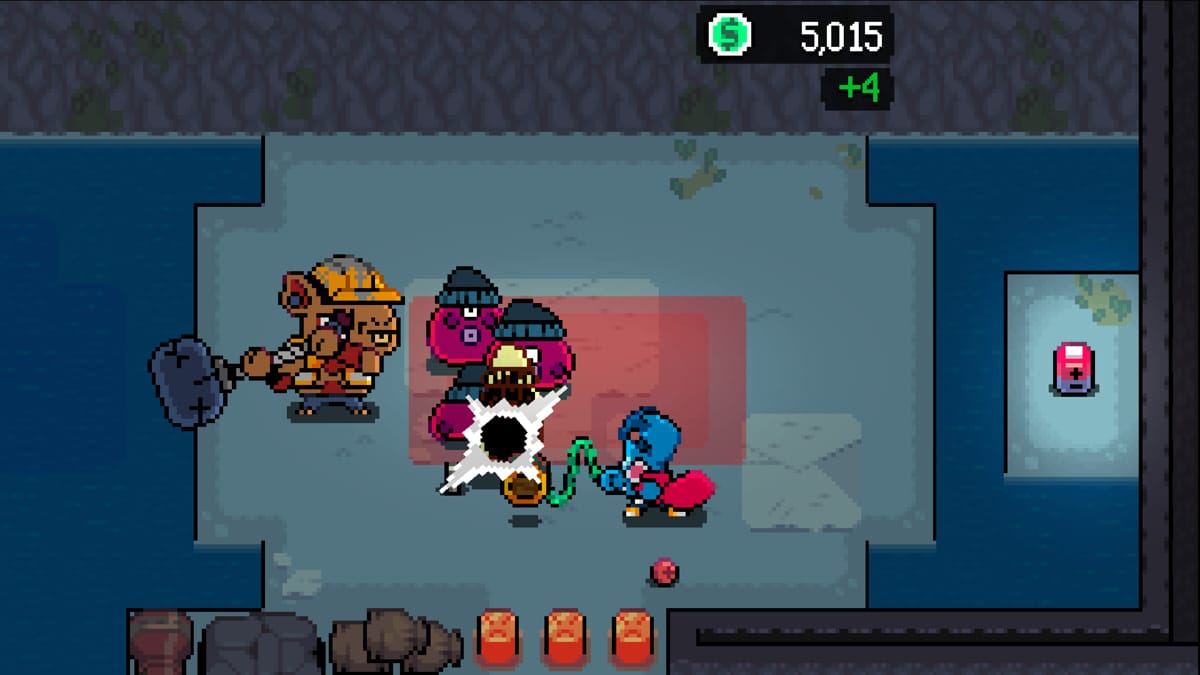
Thus, when it comes to the main boss battles book-ending each of Pipistrello's main "dungeons", the presumed chaos of having to deal with so many foes – let alone the main big-bad on top – quickly subsides to one of clear, but clever improvisation. It may take a few frustrating "I was so close!" deaths to get there (which in itself is to the game's credit, that the difficulty can make itself be known for a time) but there's something to be said about just how jam-packed with opportunity the game's combat-centric parts can be.
Beyond combat, how Pocket Trap at the same time seem to squeeze just enough figurative juice from out their yo-yo premise, to keep the experience feeling different enough when and where the need for change is required. Whether that's a new skill/ability employed to traverse a dungeon/new corner of the world map. Or as previously noted, how puzzles in Pipistrello and the Cursed Yo-Yo are tailored more towards mastering one's spatial awareness, rather than dealing with some elevated level of complexity – the need to do x more steps than prior.
The only criticism you can really lay down as a counter, is in the fact dungeons in Pipistrello aren't themselves prone to any degree of surprise at the way they're structured. Even optional temptations at a collectible or two don't exactly amount to anything beyond a slight deviation in puzzle design. Strip out any possibility for secrets or hidden chambers and when fully mapped out, all you have are a grid of oblongs. Arguably the game's most serviceable but perhaps safest spell of creativity.
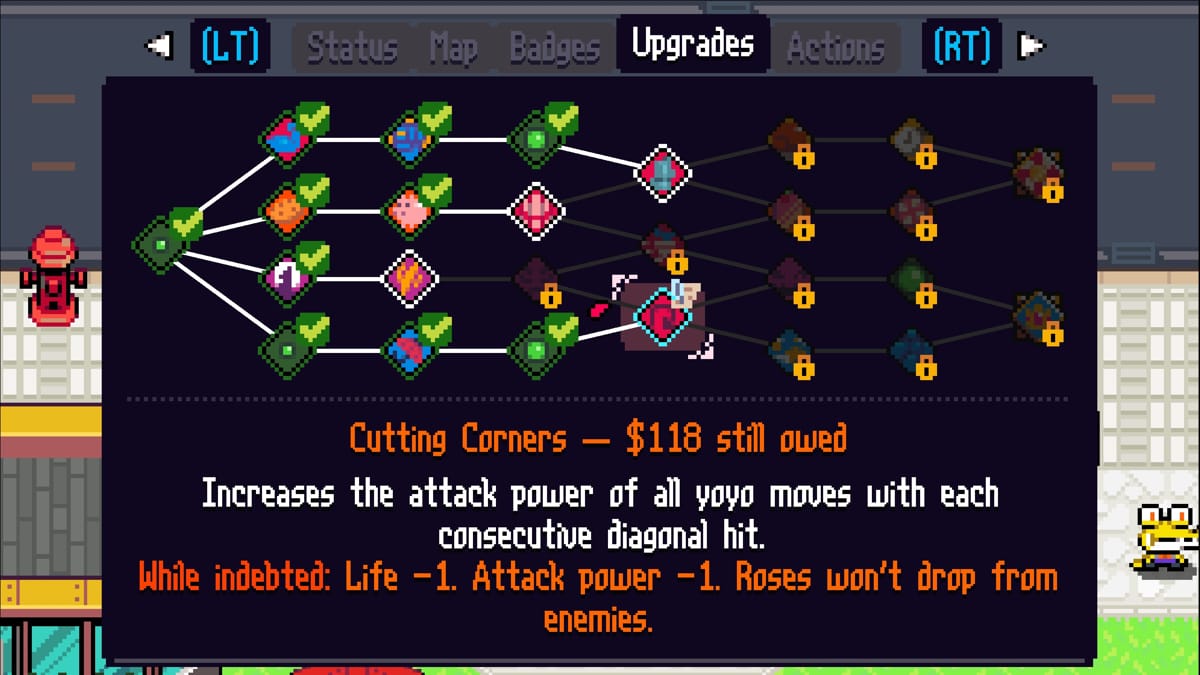
Thankfully it's in the game's approach to upgrading one's self, where Pocket Trap deserve a level of praise. And while the sight of what feels like this newly-established (bordering on repetitive) trend among independent games, namely a "badge" system, should be met with scorn, Pipistrello still finds a way for even these means of customization to feel like a worthwhile endeavor.
Namely because the real star of the show is in the game's "Contracts" system. In short: in order to acquire a permanent unlock – extra health, more damage output, additional BP so as to equip more badges – players must debuff themselves until a certain threshold of accrued money is met.
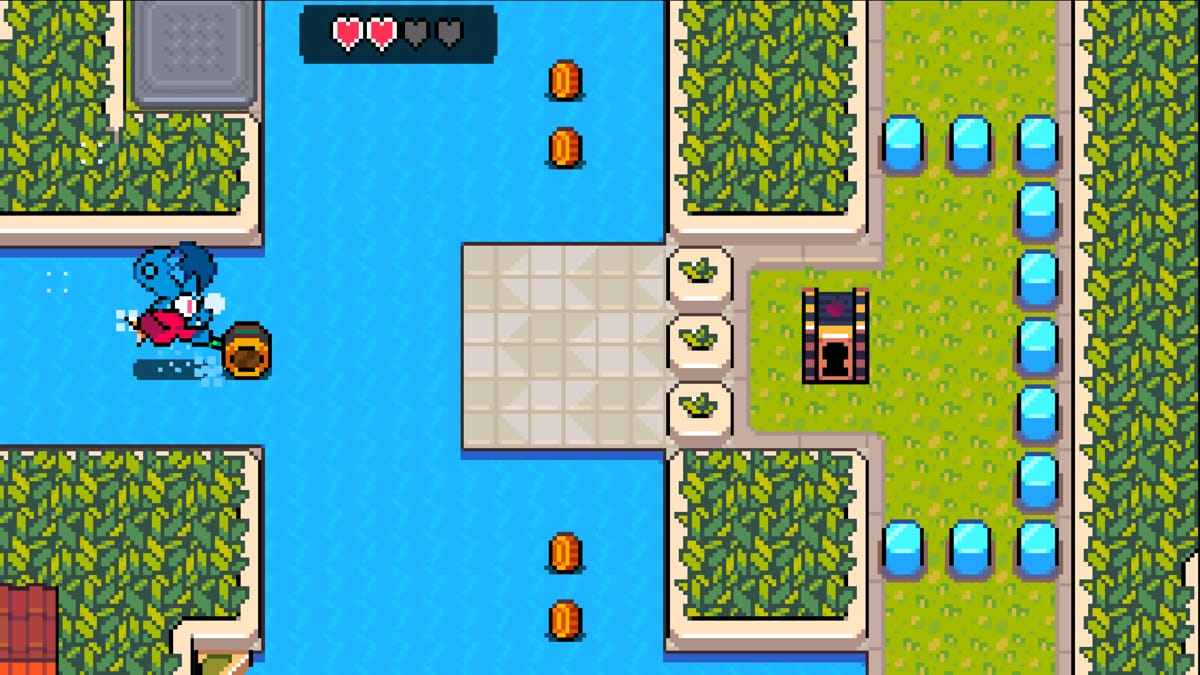
This can be anything from one less slither of health, decreased damage output, even the possibility that health-recovering items don't appear at all. It's an immediately enticing system, not just because money in Pipistrello is ample and easy to find. But because it reinforces the crucial lesson on a short-term loss eventually translating to a long-term/permanent gain.
Besides that: how soon does one even take up such contracts? Should contracts even be accepted during a dungeon, for example. For something that's treated as an aside and an optional detour, it's surprising just how much emphasis it places on a player's own confidence in their abilities and need to plan/think ahead. Especially for the later-game contracts that have you sacrificing more than one stat/aspect at a given time. I'd be lying if I said hesitation on taking on a contract, hadn't kicked in one or two times along the way.
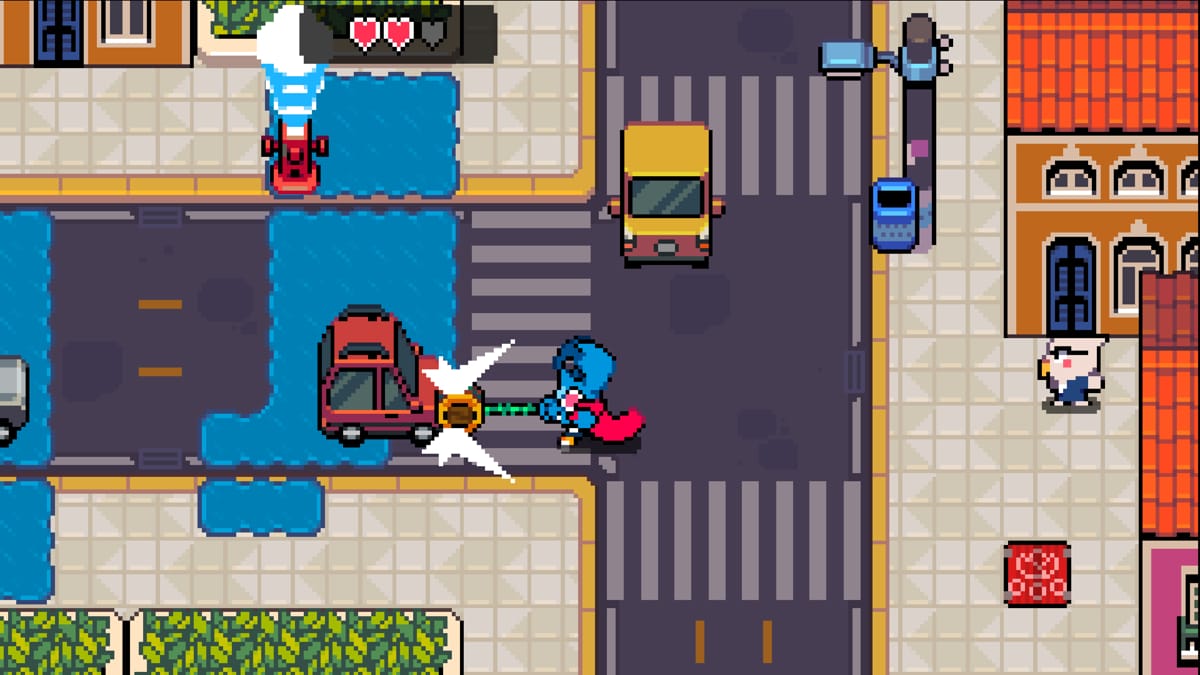
It's when and where those player-made responses and decisions to tackle a given challenge pop up, that Pipistrello and the Cursed Yo-Yo is at its delightful best. Boosted initially it may be by its easy-to-grasp combat mechanics that double up as one's tools for puzzle-solving, Pocket Trap could have very easily flown too close to the sun with a game housing a clear love for how handheld, GBA-esque adventures felt to play. Thankfully, whether its approach to player upgrading or indeed the emergent nature of combat that ends up being the true star, Pocket Trap have looked past the glaze of nostalgia.
Very much like the releases of that era, a visual and gameplay structure that can serve not just as the end-point, but a path to something better still. Hard as it may be not to think of such an era given its aesthetic and clear nods to such, Pipistrello and the Cursed Yo-Yo does at least play like a game with its own ideas at hand. And for the most part, those ideas pay off to delightful effect.



